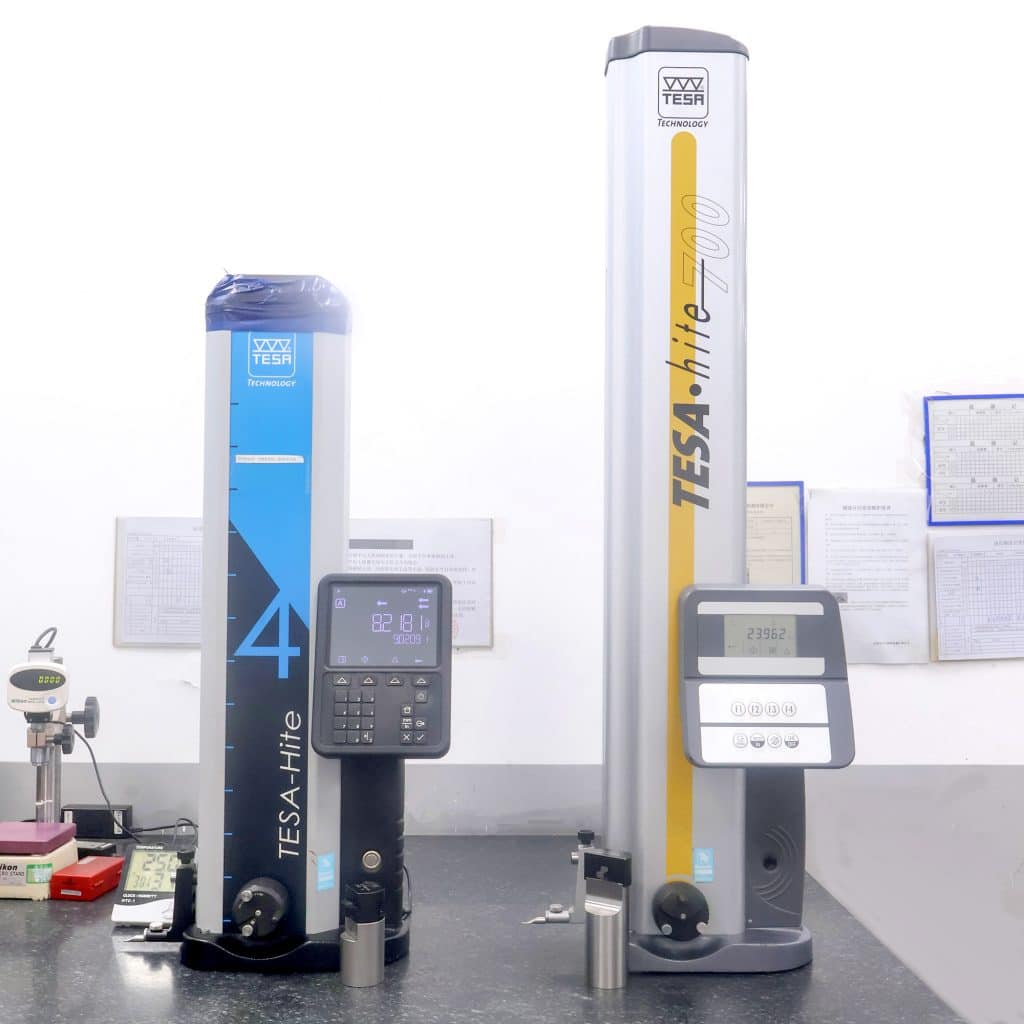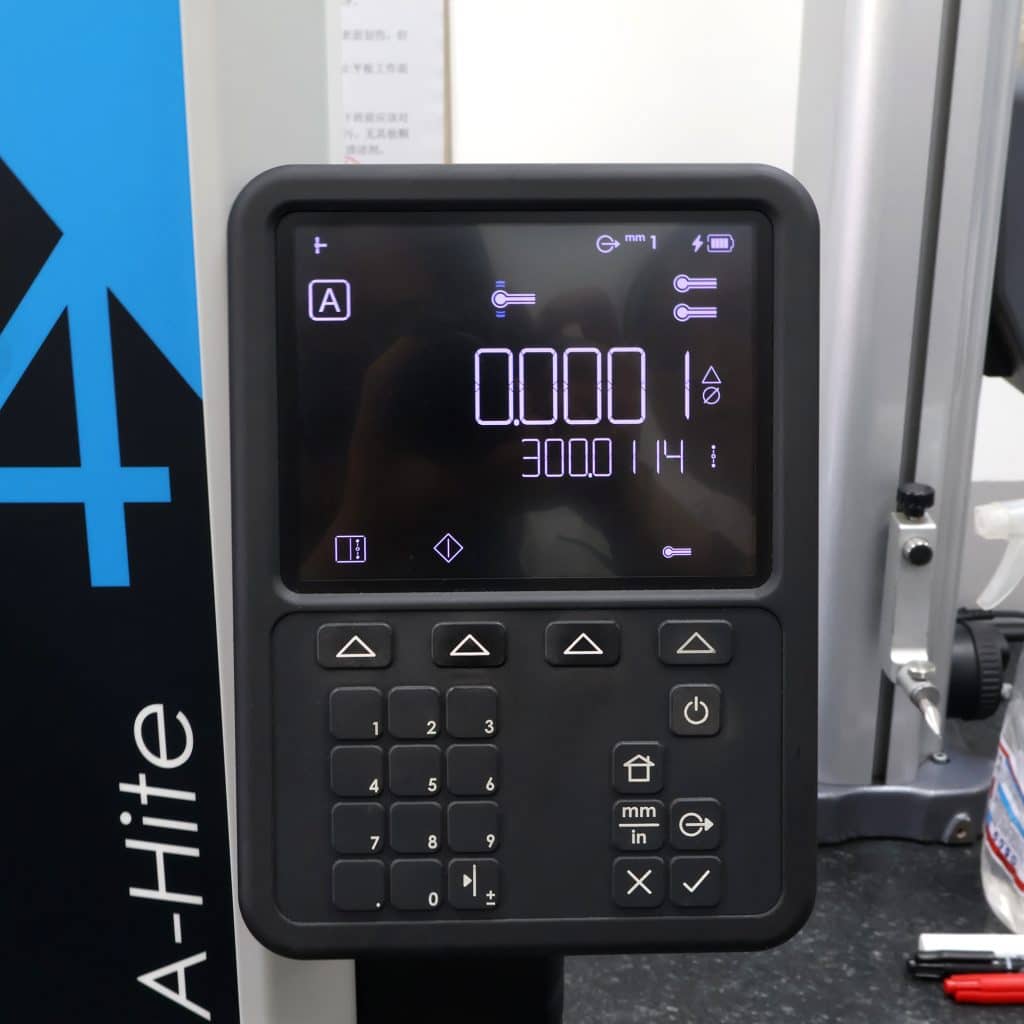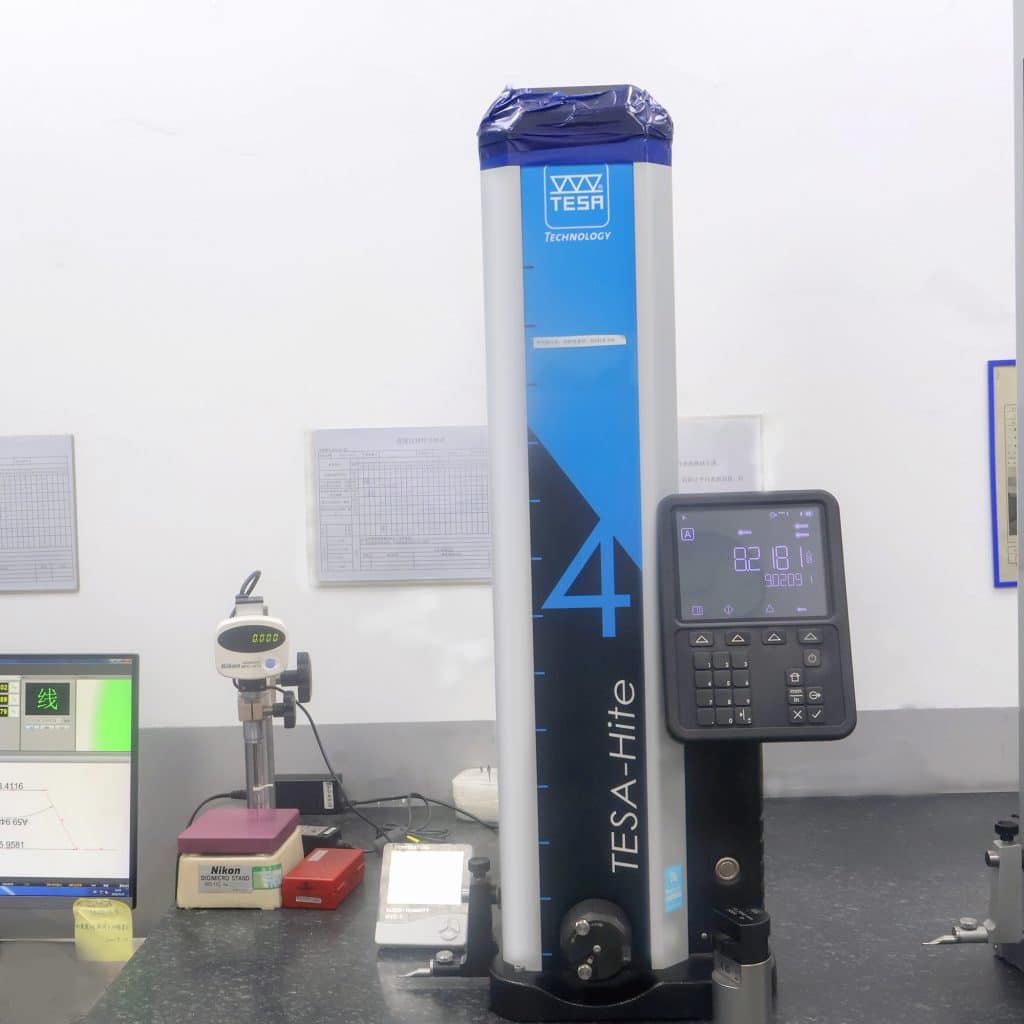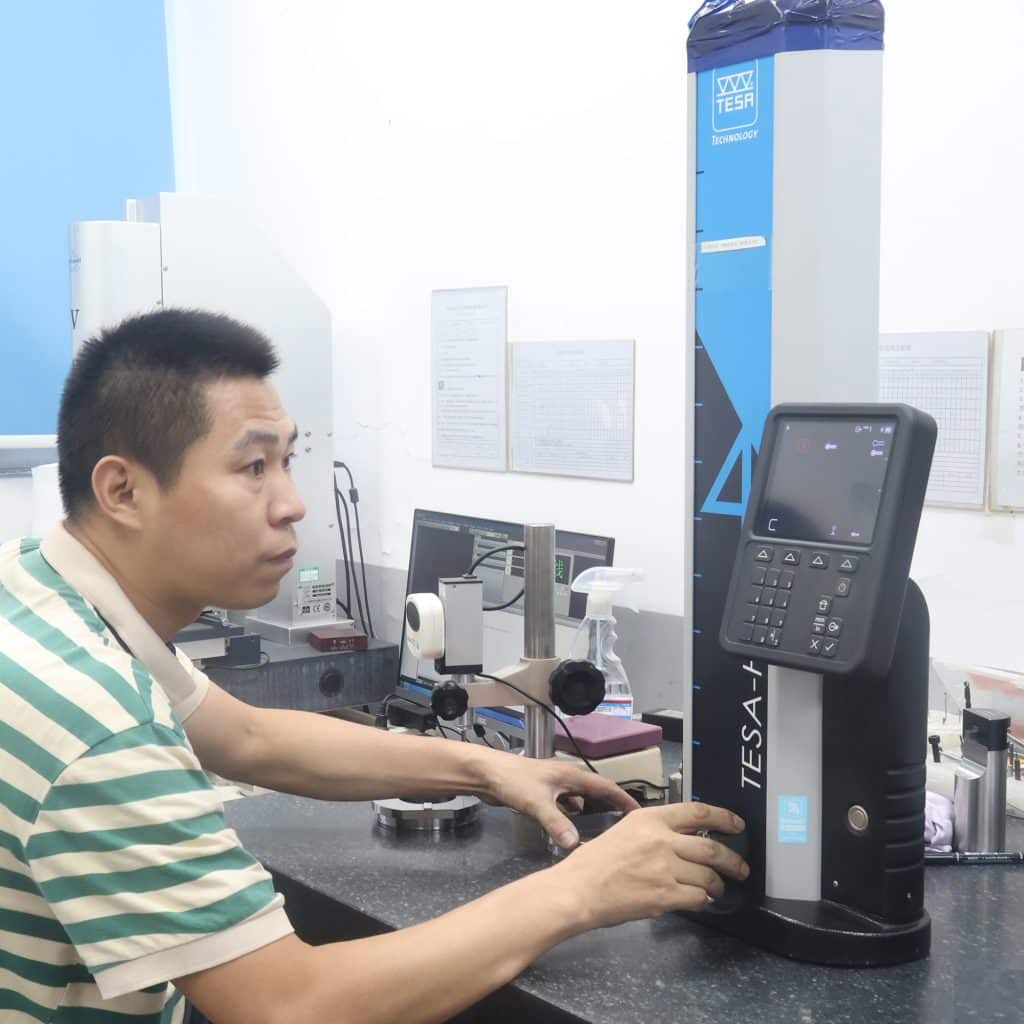TESA-HITE 400 / 700 Manual Height Gauge
The TESA-HITE 400 and 700 are height gauges manufactured by TESA Technology, Switzerland.This article will introduce the core functions and advantages of the TESA-HITE 400/700 measurement systems, covering aspects such as measuring range, resolution, acoustic signal measurement, parallelism error measurement, perpendicularity error measurement, and RS232 data output.

Measurement Range
The measuring range of the TESA-HITE 400 is 0–400 mm, while that of the TESA-HITE 700 is 0–700 mm.
Resolution: The TESA-HITE 400 offers a resolution of 0.001 mm (1 µm), while the TESA-HITE 700 provides a resolution of 0.001 mm.
Repeatability: The TESA-HITE 400 has a repeatability of approximately ±1.5 µm, while the TESA-HITE 700 offers a repeatability of around ±2 µm.
Features: The TESA-HITE 400 is suitable for inspecting small and medium-sized parts, while the TESA-HITE 700 is designed for large part inspection.

The TESA height gauge delivers highly precise measurements, thanks in large part to its internal structural design. Beneath the base of the instrument lies a special internal mechanism — the air cushion system.So how does this air cushion system help inspectors achieve accurate measurements?At the bottom of the base, there are several microscopic air holes connected to internal micro air channels. When the air supply is activated, air is released through these holes, creating an ultra-thin air film (only a few micrometers thick) between the base and the surface plate. This floating layer allows the entire instrument to glide smoothly over the surface, as if it were “floating.”Once the air cushion is turned off, the height gauge settles firmly onto the surface, ensuring excellent stability and repeatability during measurement.
The TESA 400/700 features a flexible, adjustable digital resolution, allowing the TESA control panel to perform both rapid coarse measurements and precise measurements down to micron or even nanometer levels. The control panel supports multiple digital resolution settings, ranging from 0.01 mm to 0.00001 mm, which can be switched according to measurement accuracy requirements.As is well known, lower resolutions, such as 0.01 mm, enable fast measurements and rough positioning, offering speed and readability; higher resolutions, such as 0.00001 mm, support nanometer-level precision measurements, ensuring even the smallest dimensional variations are accurately captured. In industrial production, lower resolutions allow quick measurements, improving overall efficiency, while higher resolutions ensure precise control of critical dimensions, balancing efficiency with accuracy.This results in more detailed measurement data, significantly reduces reading uncertainty, and facilitates the accurate inspection of precision components or research experiments, minimizing human reading errors and instrument resolution limitations.

The TESA 400/700 features an automatic vertex-finding function, supporting the measurement of holes and protruding shafts. Its working principle involves a probe or trigger-type stylus scanning along the surface of the workpiece and automatically detecting contact points. When the probe touches the surface, it records the exact position coordinates, and the system automatically identifies the feature’s “vertex” (such as the center of a hole, the highest point of a concave shaft, or the tip of a conical angle). Based on the coordinates of multiple points, the system then calculates geometric features, such as hole diameter, center position, protruding shaft height, and planar location.This measurement method effectively eliminates manual point measurement, reduces operational errors, and significantly improves measurement speed.
Acoustic Signal-Based Measurement with TESA.TESA utilizes advanced acoustic sensing technology to capture measurement values. When the probe contacts the workpiece surface, the system automatically detects the acoustic signal and precisely identifies the contact point.Compared with traditional height gauges or probe-based measurements, which rely on the operator’s “feel” to judge when the probe touches the workpiece, acoustic signal measurement uses sensors to monitor real-time acoustic changes (micro-vibrations or sound waves) at the instant of contact. This allows the system to automatically determine the contact point, minimizing human errors caused by differences in applied force, speed, or tactile perception.The result is high repeatability, with contact point precision reaching ±1 µm or better. The acoustic sensing system can detect the surface immediately upon probe contact, making it especially suitable for measuring precision holes, shafts, planes, thin-walled components, and other general workpieces in production or on-site inspection.
TESA Parallelism Error Measurement FunctionTESA features the capability to measure parallelism errors. In the TESA measurement system, a precision probe is used to perform multi-point measurements at different positions on two planes or along two lines. The system automatically evaluates the spatial positions of all measured points and calculates the maximum deviation from the reference, which corresponds to the parallelism error.In mechanical part manufacturing and assembly, parallelism errors can directly affect assembly fit and motion performance. TESA’s micron-level measurement accuracy enables quality inspectors to detect even small deviations early, preventing issues such as assembly stress, motion sticking, and poor sealing. This ensures high-precision assembly, avoids assembly errors, and improves overall production efficiency.

Determination of Perpendicularity Error Using TESATESA determines perpendicularity errors by measuring the spatial deviation between two features at specific linear angles using digital sensors. In the TESA measurement system, the digital sensors precisely record the spatial positions of two mutually perpendicular features—such as lines, planes, or hole axes—and calculate the perpendicularity error.High-resolution linear encoders, typically 0.0001 mm or higher, are used to ensure that the digital sensors achieve micron-level measurement accuracy with very high resolution.
RS232 Data Output for Intelligent Measurement Transmission.The TESA measurement system is equipped with a standard RS232 data output interface, enabling real-time transmission of measurement results to a computer or quality control system. This allows for automatic data acquisition and management, reducing errors from manual entry, providing real-time production quality monitoring, and quickly identifying deviations.
TESA (Switzerland) Height Gauges with SCS Calibration Certificate.TESA height gauges are supplied with an SCS calibration certificate, calibrated in an SCS-accredited laboratory rather than relying solely on the manufacturer’s internal inspection report. Certificates bearing the SCS or ILAC-MRA mark are generally recognized in multiple countries, including the EU, USA, and China, and comply with international standards.
Our company is equipped with TESA 400/700 height gauges to monitor the precision of workpieces in real-time during the manufacturing process. This enhances work efficiency, enables digital management, and ensures the delivery of high-quality products with reliable dimensional data, meeting high standards for our customers.